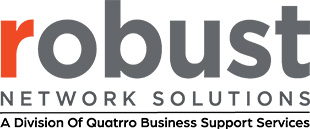The state of the economy is no doubt shifting and uncertain. Markets are consistently fluctuating in a downward position, inflation is on a steady climb, and costs in various sectors, such as oil and gas, have increased tremendously. However, despite this shifting state of the economy, one thing has remained consistent: the rise of IT budgets. Organizations identify IT processes and workflows as mission-critical to their success. As a result, their IT budget must be accommodating.
Deep Dive into IT Budgets
IT budgets are the money spent on an organization’s information technology services and systems. These budgets represent the total allocation of IT spending over a set period, often annually, depending on the organization’s needs. IT budgets encompass three categories of expenses that are broken down further into moveable parts. The three categories are IT personnel, IT Expenditure Categories, and IT Infrastructure Expenses. Each of these categories contains different components that are factored into an organization’s IT budget.
The IT budget of an organization includes personnel to run normal day-to-day functions of the IT department, as well as special projects that may be needed. Personnel functions also include planning, designing, installing, programming, and managing computer software and hardware. The computer’s software and hardware fall into the second category of IT budgeting which is IT Infrastructure expenses. These infrastructure expenses also include services (ie. Maintenance of networks and implementation of key services) and subscriptions for different services like Zoom. IT expenditures, the third category of IT budgets, are project expenditures, operating expenditures, and capital expenditures.
In order to sum it all up, IT budgets include several different moving parts and expenses. These expenses are often more costly than other departments’ budgets. As a result, there must almost always be a steady increase in an organization’s budget, no matter the state of the economy.
Current State of Economy
The current state of the economy is in dire straits. Inflation is rapidly rising at an alarming pace that has not been seen in forty years. Businesses and organizations are scrambling to stay ahead, as well as afloat, in this changing face of the economy. In the actualization of the downward and, at the same time, fluctuation in the economy, organizations are trying to adjust their budgets across their varied departments.
One key term that is floating around, and is possible on the horizon, is a looming recession. A recession is defined as a significant decline in an economy’s activity that can last for years or months. As a result, organizations must have business continuity in order to keep up with this uncertain fluctuation or dismal outcome of a recession. The current state of the economy influences budgeting concerns and creation.
The Shifting Economy’s Impact on IT budgeting
The uncertainty that surrounds the economy and its shifting has had an opposite and different impact on IT budgets. According to Kurt Mackie, IT departments are planning to increase their budgets in the coming 2023 year. This increase will be made despite the glowing alarm of an economic recession and current inflation.
IT spending priorities are expected to align with this increase in IT budgeting. Organizations must come to the table and rank their spending plan needs accordingly. Each need must be customizable according to its propensity to run up budgeting costs. It is speculated that likely half of organizations plan to increase IT budgets in 2023.
The concern and actualizing of inflation always come into play as it relates to IT budgeting as well. Inflation is the rate of increase in pricing over a certain period of time. This elevation in inflation will increase budgeting to 40%, which is up from 20% in the year 2022. Organizations must be ready to ensure that they are getting the most out of their IT budgets, despite the rate of inflation.
As stated, the economy’s impact on IT budgeting is positive, although opposite to what one would likely think would happen. The shifting of the economy, with its inflation and possible recession activity, has allowed organizations to increase their budgets. This increase is pivotal in order for all categories of IT to be properly funded in order to maintain optimal IT success for their organizations.
Incorporate Robust Network Solutions into your IT Budget Today
Robust Network Solutions is an IT services and consulting firm headquartered in the San Francisco Bay Area. Consumers and organizations can utilize several of the many services they provide. These services are backed by Robust Network Solutions’ over twenty years of business experience, a ninety-five percent client retention for seven or more years, and a response time of ninety-three percent in fifteen minutes. As it relates to those seeking services to incorporate into their IT budgets, this company provides technology consulting, data backup and disaster recovery, cybersecurity, and network solutions. Clients can utilize different facets of these services as they see fit with the strong backing of Robust Network Solutions.

